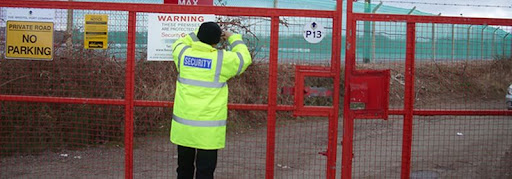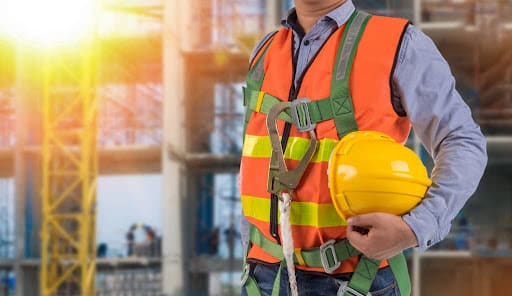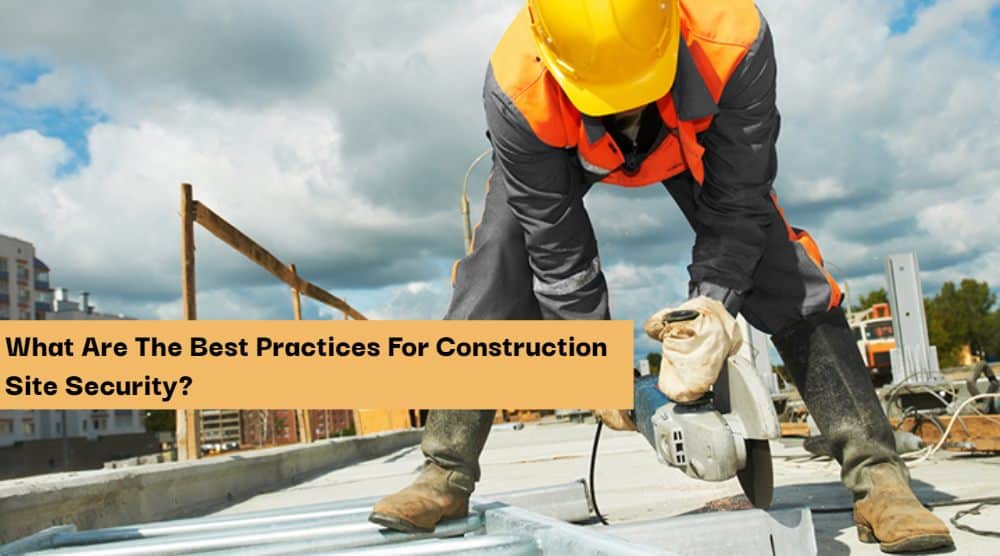Introduction
Threats to construction site security are directly proportional to the size of the project. Crime can happen at any location but as we all know, normally construction sites do not operate under continuous surveillance and hence are prone to criminal threats. Construction sites are undoubtedly expensive work areas and face many types of threats and hazards. Workers are constantly carrying out tasks, building infrastructure, and storing expensive equipment, tools, and materials on site.
The equipment and material used for construction and the machinery alone are worth quite a handsome amount. As the construction period can span over weeks, months, or even years, it can host not only potential threats but also natural disasters. Implementing a few good practices for construction site security can effectively curtail these threats, helping save precious lives and reduce the monetary losses faced by construction companies.
Potential Threats to Construction Sites
Construction sites can face a number of threats that can be costly and detrimental to projects in progress. Here are five facts about construction sites threats:
- One out of ten construction workers sustain an injury each year
- Nearly a fifth of workplace deaths are from the construction industry
- An average of two deaths occur daily in construction
- Electrocution accounts for 9% of construction deaths
- Surviving a construction accident is not without consequences/ repercussions
A few possible man-made/ natural threats to construction sites are:
- Fire
- Theft
- Electrocution
- Vandalism
- Wind damages
- Water damages
- Natural disasters
- Accidents
- Acts of God

Importance of Construction Site Security
Security of the construction site is of the essence. A secure site can deliver seamless service and can protect any project from expensive losses. Construction sites, prone to different types of crimes/ threats fall victim to increased cost effects, unhappy clients, and delayed projects which is why construction companies need to effectively protect themselves and their workers. With technological advancements in the modern world, where many means are available to protect construction sites effectively, there are also people who can come up with innovative ideas to create threats and inflict losses on construction companies.
Practices for Construction Site Security
Completely securing a construction site from any threat of loss or damage might be an unrealistic goal but successful Construction Site Security accepts the element of risk involved in business and eradicates the causes by the following means:
On-Site Security
On-site security means having human personnel operating on the ground on-site. Larger construction sites can benefit from this sort of security measure. The best advantage of this type of measure is that the on-ground personnel can communicate with people, devise the most logical plan, coordinate the efforts, and can provide the most efficient response. An alert security person, merely present at the construction site is an effective visual deterrent.
Zero Tolerance Policies On Site
Moreover, the company can post safety policies around the construction site and distribute them to everyone entering the project to help prevent incidents like falls, electrocutions, and fires. Employees must understand that these policies are mandatory, and any violation may lead to disciplinary action, consequences, or fines.
Perimeter Protection
Perimeter protection not only provides a sense of security to people working at a construction site but also is a potent deterrent for criminals to stay away from the site. The biggest advantage of walled perimeter protection is that the intruder has the fear of the unknown. Moreover, Fences, locks, observation posts, and lights are also powerful criminal deterrents. Any construction site equipped with a perimeter fence, coupled with observation posts, searchlights, and locks can ensure foolproof security of the construction site.

Log Maintenance
The most effective way to ensure the security of construction sites is to accept that anyone can be a criminal. Employees and authorized visitors may also be involved in theft, so the manager must assign a serial or identifying number to every item on the construction site and register it. The manager should maintain a proper logbook, recording all tools issued to employees and ensuring they are returned under the respective individual’s name.
Single Access Point
One of the most effective steps to ensure the security of the construction site is to limit avenues of approaches to that construction site. This will directly result in limiting approach options to thieves and will ensure a supervised entry/ exit to the construction site by the workers. Issuing identity cards, and placing registers with the names of workers on them at the entrance will further enhance the checked entry and exit from the construction site. This Security Protection Services approach can be best described as a two-pronged security approach in which on one side. It protects the construction site by preventing potentially dangerous, unapproved. Or uncertified workers from entering and also secures the entire perimeter, making it more difficult for unauthorized individuals to gain access after work hours.
Surveillance System
This is a strong step in creating a strong security mechanism for the construction sites. Most modern construction site surveillance systems feature high-definition video coverage. Recording capabilities, thermal and motion detection, and can be actively monitored by security personnel. Using infrared sensors and automated alarm systems. Installing surveillance systems might not be effective in preventing crime but modern surveillance systems if properly deployed, can offer complete site coverage. In doing so these systems enhance the chances of catching culprits after the fact and recouping lost assets.
Site Safety
One of the greatest threats to the safety of workers on construction sites is other workers that might be doing jobs that they are not competent enough to do. Site managers should ensure safety by allowing only workers with valid and up-to-date permits or certificates to work on the construction site.

Recommendations
- No machine can ever secure a construction site better than the physical presence of a human being. Security personnel can exercise proper command and control, can interact with people, and can predict potential threats. It can take rational decisions to thwart any mishap and can exercise better judgment. This potent tool takes high precedence in a sequence of best practices for construction site security. Moreover, the management should devise a comprehensive plan to hire an adequate number of security guards according to shift timings. They should clearly define the areas that require security coverage to ensure an agile and alert response from the on-site security team.
- A construction company should establish clear rules, policies, standard operating procedures, and a comprehensive list of Do’s and Don’ts to prevent accidents and mishaps such as fires, falls, breakages, and electrocutions. The company must communicate these guidelines to every individual and worker present on-site or joining the project. Additionally, management should place visible warning and caution signs throughout the construction site and distribute safety brochures to reinforce awareness and encourage consistent adherence to safety protocols. Supervisors should warn or fine workers who violate these rules to ensure the proper implementation of safety policies in both letter and spirit.
- The third best practice to ensure construction site security is to have a fence all around the construction site. Teams can install various types of perimeters, such as caution tapes, barbed wire, handrails, and brick walls, depending on the level of security required. Depending upon the duration of projects and the scale of threat/ losses perceived in that area. To further strengthen the perimeter fence, it can be dovetailed with hang-around security. Foot patrolling by security personnel, watch towers, searchlights, and even security dogs.
- Unaccounted tools and unregistered equipment are highly vulnerable to theft. Site managers must maintain proper logbooks to keep a recorded track of all equipment and tool usage. To support this, teams should tag, register, and document all machinery, tools, and equipment. They must also ensure a formal handover process whenever these items are transferred from one user to another. Another step in this domain to further ensure transparency is to conduct a conditioning board. At regular intervals in presence of competent authority to ensure that equipment and tools. Which are rendered useless/ expired or worn out can be charged off from the ledger/ log book.
- All workers of a construction site must be issued identity cards to ensure supervised entry into the construction site. Installing entry gates with the required identification ledger can be a proactive approach toward ensuring construction site security. Moreover, security personnel should maintain a record of all visitors at the entry points and issue visitor cards as they move around the construction site. This mechanism will also ensure smooth and checked exit of all workers and visitors out of the construction site.
- Technology plays a pivotal role in securing our surroundings. Keeping this into account, the installation of cameras at a construction site will not only act as a deterrent. But will also help in identifying the culprits after an incident has occurred. Further to this, different types of cameras (night vision, motion sensors, 360-degree recording, CCTV, and PTZ cameras). It can be installed at construction sites as per their requirement.
- Certified workers and qualified staff are important aspects to ensure construction site security. It not only gives confidence to other workers which contribute to efficient working. But also reduces the risk of being affected/suffering losses at the hand of unqualified fellow workers.
Conclusion
Safety on a construction site is essential to protect workers, safeguard the public, and ensure smooth project operations. By fostering a strong culture of safety, construction companies can protect both themselves and their clients from significant losses. On the other hand, a safe and relaxed working site can increase work performance. Moreover, lower stress raises productivity and can benefit a business by enhancing job satisfaction. In this regard, the above-mentioned steps can play a pivotal role in ensuring construction site security.






